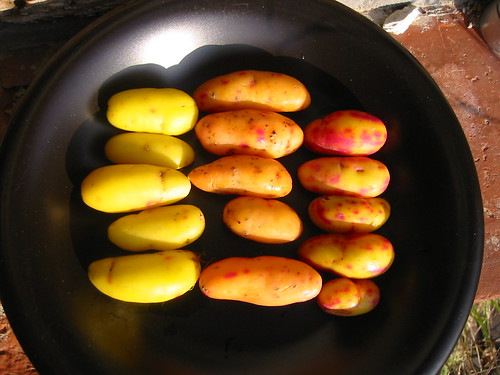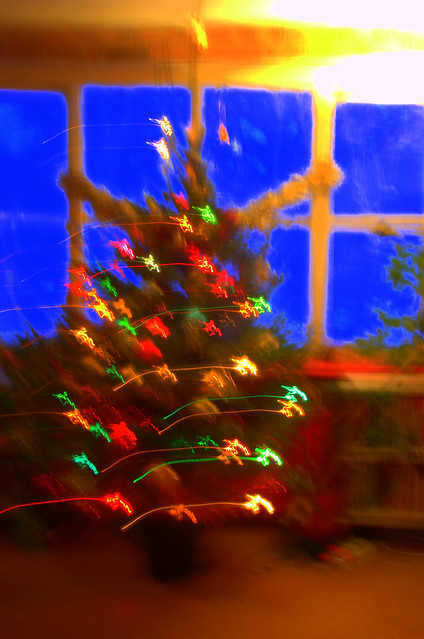
This is the first crop I ever took from the Ulluco that I bought from Realseeds in 2008. Look pretty don't they? Since then it's been a steadily spiralling descent into entropy and failure. The harvest I got from these in 2009 was tiny, the harvest from those in 2010 laughable, just five baked bean sized tubers from which by some miracle three survived to make plants.
During 2011 I adopted a strategy of maximum care. The little plants were cosseted and kept in a big well fed and watered tub of compost. My plan was to keep them outside during the summer and then move them indoors for November and December. The dark couldn't hurt them and the cold house would still be frost and rodent free. They grew vigorously and I had hopes of rejuvenating the seed stock with a substantial harvest.
In November I noticed the top growth was looking a bit shabby but it was autumn, it didn't seem unreasonable - until I picked up the pot to move it inside and all the leafy stems fell off. Vine weevils had invaded the pot and chewed away all the roots. I found three baked bean tubers this time and only one of them has made a shoot.
But I couldn't bear to throw away the strong, if wilted, foliage. I washed it off well and replanted the chewed stems deeply into fresh compost. Ulluco are stem rooters and it was my last best hope to save them. The pot was sealed into an air filled plastic bag as a makeshift propagator. It didn't work exactly, the stems had recognised they must die and the winter light sealed their fate but there was enough juice left in those doomed top shoots to quietly produce half a dozen good sized tubers. I didn't realise it until just a day ago but clearing the windowsill for some new cuttings I picked up the pot to throw it away and spotted colourful tubers under the decayed leaves. I have enough of the pink spotted variety for half a dozen new plants and a few too small to classify for colour that might also produce viable starts.
To say I'm pleased is an understatement. These are not throw them in the ground Peruvian imports like Oca and potatoes by any means but this determination to keep growing against the odds means that my mismanagement over four years can be ameliorated, I might finally get to learn how to grow these vegetables successfully. Fingers crossed.

















